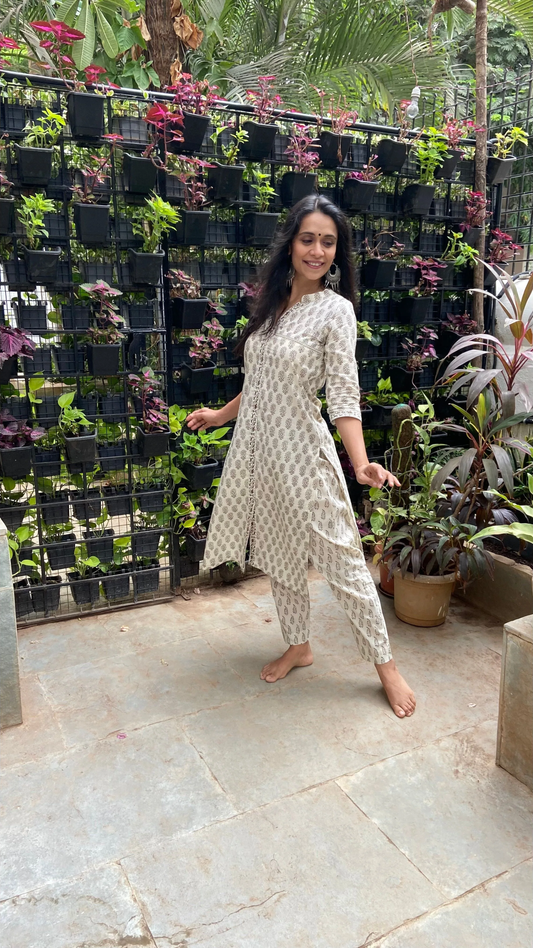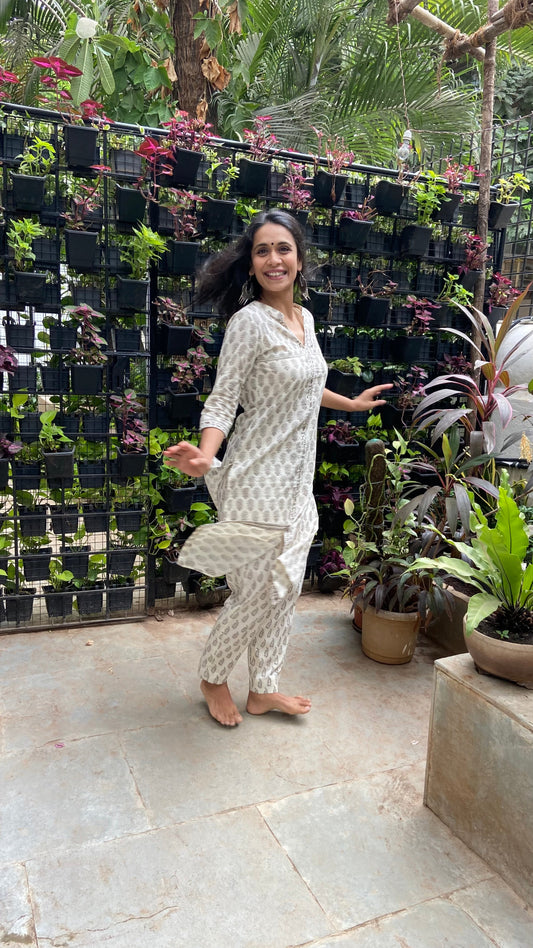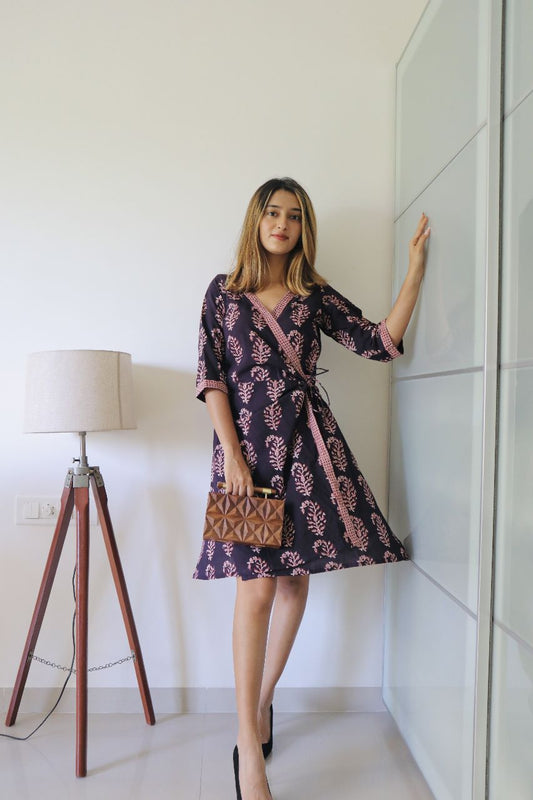"Bagh" typically refers to a traditional style of hand-block printing that originated in the Bagh village of Madhya Pradesh, India. It is a renowned traditional textile craft known for its intricate and vibrant designs. The word "Bagh" itself means "garden" in Hindi, and the designs often reflect floral patterns and motifs.
Here are some key features of the Bagh craft:
-
Block Printing: Bagh involves the use of wooden blocks carved with intricate designs. These blocks are dipped in natural dyes made from various plants, minerals, and other natural substances.
-
Designs and Patterns: Bagh prints often feature floral and geometric patterns, with bold and vibrant colours. The designs can vary from simple motifs to more intricate and detailed patterns.
-
Natural Dyes: Traditional Bagh prints use natural dyes derived from plants, roots, flowers, and minerals. Some common natural dye colours include red from madder, black from iron rust, yellow from turmeric, and blue from indigo.
-
Process: The process begins with preparing the fabric (usually cotton or silk) by washing and bleaching it. The fabric is then soaked in a mixture of myrobalan and water, which helps in fixing the dyes. After this, the fabric is printed using the carved wooden blocks and natural dyes. The fabric is then washed to remove excess dye and fix the colours.
-
Specialty of Bagh Print: One unique aspect of Bagh prints is the process of "dabu" or resist printing. A paste made from clay, gum, and lime is applied to specific areas of the fabric to create a resist against the dye, resulting in intricate patterns.
-
Cultural Significance: Bagh printing has deep cultural and historical significance in the region. The craft has been passed down through generations and is often associated with festivals, weddings, and special occasions.
Bagh printing is not only a craft but also an important source of livelihood for many artisans and communities in the Bagh region. It represents a beautiful blend of art, tradition, and sustainable practices.








